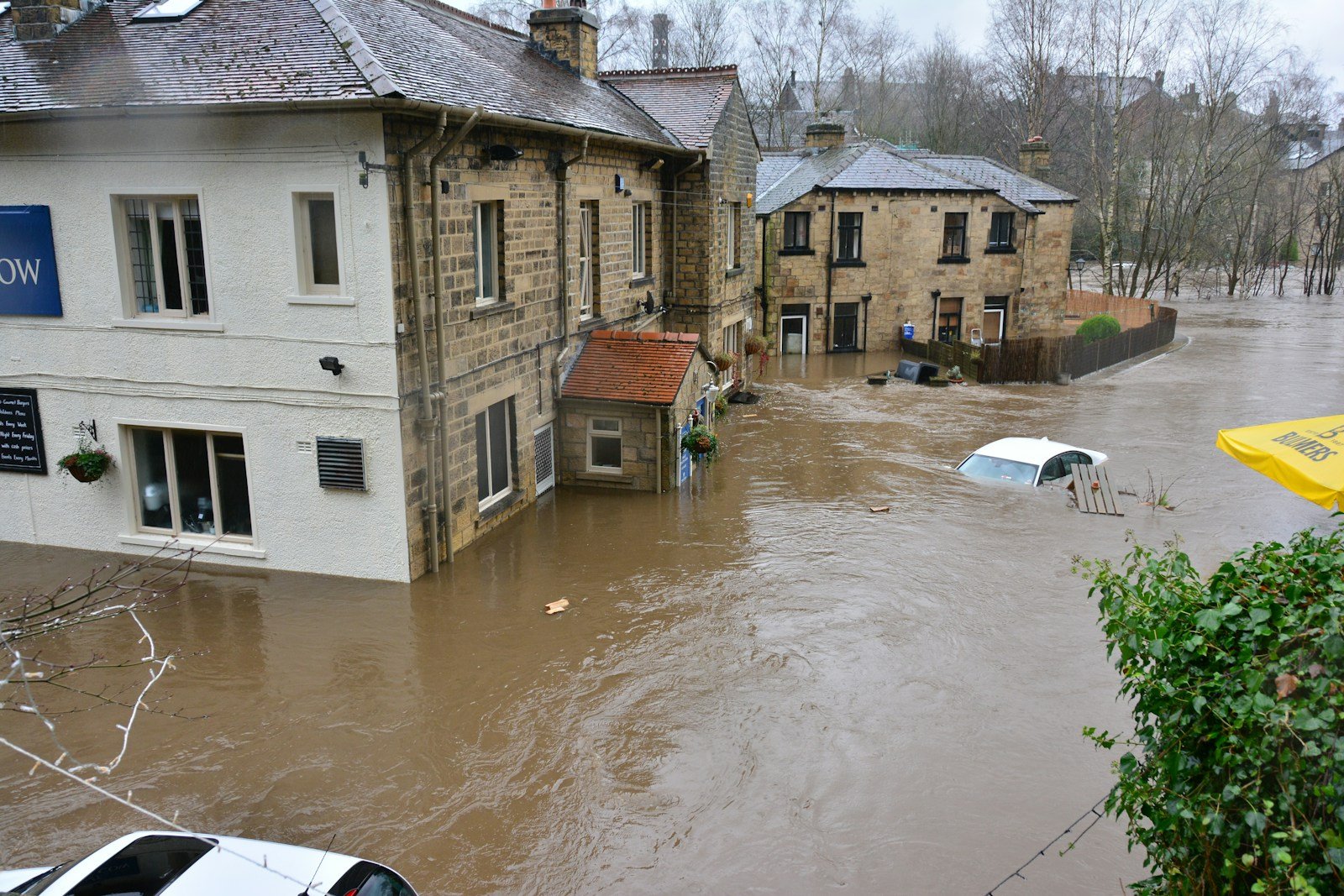In the aftermath of a disaster, it is crucial for development efforts to prioritize resilience in order to build back stronger and more sustainable communities.
One key consideration is the need for comprehensive risk assessments to understand vulnerabilities and mitigate potential future risks. By identifying the specific challenges faced by a community, tailored solutions can be implemented to enhance preparedness and response capabilities.
Furthermore, collaboration and coordination among various stakeholders is essential in order to ensure a holistic approach to post-disaster development. Engaging with local communities, government agencies, non-profit organizations, and private sector partners can leverage diverse expertise and resources to foster a more effective recovery process. By fostering a sense of shared responsibility and collective action, resilience can be promoted at all levels of society, paving the way for a more sustainable and disaster-resilient future.
Understanding the Impact of Disasters on Communities
Disasters have profound effects on communities, reshaping their social, economic, and physical landscapes in significant ways. The impact of disasters can be devastating, leading to loss of lives, displacement of populations, destruction of infrastructure, and disruption of essential services. These events often exacerbate existing vulnerabilities within communities, particularly those that lack adequate resources or infrastructure to withstand and recover from such shocks.
Furthermore, disasters can have long-lasting repercussions, affecting the well-being and livelihoods of residents for years to come. The aftermath of a disaster can create challenges in terms of access to healthcare, education, employment, and housing, further deepening the vulnerabilities of affected communities. Understanding the multifaceted impact of disasters on communities is crucial for developing effective and targeted response and recovery strategies that address the specific needs and challenges faced by those affected.
The Role of Government in Promoting Resilience and Recovery
Governments play a crucial role in promoting resilience and facilitating recovery efforts following disasters. Through effective policy-making and coordination, governments can ensure that the necessary resources and support systems are in place to respond to emergencies and rebuild communities. By investing in infrastructure that can withstand future disasters and implementing risk reduction strategies, governments can minimize the impact of future crises on vulnerable populations.
Moreover, governments can leverage their authority to enforce building codes and regulations that prioritize safety and resilience. By working closely with local stakeholders, including communities and businesses, governments can create comprehensive disaster management plans that address preparedness, response, and recovery. Collaborating with international organizations and neighboring countries can also enhance the government’s capacity to manage large-scale disasters effectively and ensure a coordinated response that prioritizes the needs of affected populations.
Engaging Local Stakeholders in the Recovery Process
To ensure the success of post-disaster recovery efforts, engaging local stakeholders is paramount. Local communities possess invaluable knowledge of their needs, resources, and capacities, making their involvement crucial in the development and implementation of effective recovery plans. By actively involving local stakeholders, such as community leaders, residents, businesses, and civil society organizations, in decision-making processes, recovery initiatives can be tailored to address specific challenges and leverage existing strengths within the community.
Local stakeholders bring a diversity of perspectives and expertise to the table, enriching the recovery process with innovative ideas and approaches. Collaboration with these stakeholders fosters ownership and empowers communities to take an active role in shaping their recovery trajectory. Through meaningful engagement, trust is built, relationships are strengthened, and sustainable solutions are co-created that are responsive to the unique needs of the community. The involvement of local stakeholders not only enhances the effectiveness of recovery efforts but also contributes to building resilience that can withstand future disasters.
Utilizing Technology for Effective Disaster Response
In the realm of disaster response, technology plays a crucial role in enhancing the efficiency and effectiveness of relief efforts. Leveraging technological tools such as geographic information systems (GIS), drones, and mobile applications can facilitate rapid assessment of affected areas, enabling responders to prioritize resources and deploy assistance where it is most needed. Real-time data collection and analysis through these technologies also provide invaluable insights for decision-makers, helping them make informed choices in a time-sensitive environment.
Moreover, the advent of social media platforms and communication technologies has revolutionized the way information is disseminated during emergencies. By utilizing these channels, authorities can reach a wider audience, communicate critical updates, and mobilize support for affected communities. Harnessing the power of technology for effective disaster response not only streamlines coordination among stakeholders but also fosters a more coordinated and integrated approach to crisis management.

Addressing Long-Term Challenges in Post-Disaster Development
Addressing long-term challenges in post-disaster development requires a comprehensive and sustained approach that looks beyond immediate recovery efforts. One key aspect to consider is the need for effective urban planning that integrates disaster risk reduction measures into development strategies. By incorporating resilience-building elements into the design and development of cities and communities, the impact of future disasters can be mitigated, and the overall sustainability of the built environment can be enhanced.
Additionally, fostering community participation and empowerment is crucial for long-term resilience in post-disaster settings. Engaging local residents in decision-making processes, from planning and implementation to monitoring and evaluation, can lead to more sustainable and inclusive development outcomes. By building the capacity of community members to actively participate in shaping their own recovery and development trajectories, a sense of ownership and resilience can be instilled within the affected populations, paving the way for more sustainable and adaptive post-disaster development initiatives.
Building Infrastructure that is Resilient to Future Disasters
When it comes to post-disaster development efforts, one crucial aspect that demands attention is building infrastructure that can withstand the impact of future disasters. This involves not only constructing robust physical structures but also implementing comprehensive planning and design strategies that consider the potential risks and vulnerabilities faced by the community. Infrastructure resilience is essential for ensuring the continuity of essential services, safeguarding lives, and minimizing economic losses in the event of a disaster.
Incorporating resilient features into infrastructure projects requires a multi-faceted approach that combines engineering expertise, risk assessment, and stakeholder engagement. It is imperative to leverage the latest technological advancements and best practices in the field to design buildings, roads, bridges, and utilities that can endure the forces of nature. Additionally, investing in sustainable materials, innovative construction techniques, and efficient maintenance protocols can further enhance the resilience of infrastructure assets, making them better equipped to withstand the challenges posed by future disasters.
Promoting Sustainable Development Practices in Recovery Efforts
Sustainable development practices play a crucial role in the recovery efforts following a disaster. By incorporating sustainability into post-disaster reconstruction plans, communities can not only rebuild in a way that minimizes environmental impact but also ensures long-term resilience against future disasters. This involves adopting green building techniques, promoting renewable energy sources, and prioritizing efficient resource management to create a more sustainable and disaster-resilient infrastructure.
In addition to environmental considerations, promoting sustainable development practices in recovery efforts also entails addressing social and economic aspects of rebuilding. This includes integrating principles of social equity and inclusion, fostering community engagement in decision-making processes, and promoting economic opportunities that are environmentally conscious and socially beneficial. By embedding sustainability into every aspect of post-disaster development, communities can not only recover from the immediate impacts of a disaster but also thrive in a way that is equitable, resilient, and environmentally sustainable.
Ensuring Equity and Social Inclusion in Post-Disaster Reconstruction
In the aftermath of a disaster, it is crucial to prioritize equity and social inclusion in the reconstruction process. Vulnerable populations, including low-income communities, the elderly, persons with disabilities, and marginalized groups, are often disproportionately affected by disasters and may face additional barriers during the recovery phase. As such, it is essential to ensure that post-disaster reconstruction efforts are equitable and inclusive, taking into account the diverse needs and perspectives of all community members.
To promote equity and social inclusion in post-disaster reconstruction, it is imperative to engage with local stakeholders and community members throughout the decision-making process. By actively involving those directly impacted by the disaster in planning and implementing recovery initiatives, it is possible to foster a sense of ownership and empowerment within the community. Additionally, incorporating diverse voices and experiences into reconstruction efforts can lead to more comprehensive and sustainable outcomes that address the unique challenges faced by different segments of the population.
Measuring Success and Monitoring Progress in Recovery Initiatives
In the realm of post-disaster recovery, the ability to effectively measure success and monitor progress in recovery initiatives is paramount. It is essential for stakeholders at all levels to have reliable mechanisms in place to gauge the efficacy of recovery efforts and adapt strategies as needed. By establishing clear indicators and benchmarks, decision-makers can track the impact of interventions, identify areas for improvement, and ensure accountability throughout the recovery process.
To achieve meaningful and sustainable outcomes in post-disaster development, it is crucial to employ a mix of quantitative and qualitative measures when assessing progress. Quantitative data, such as economic indicators, infrastructure restoration rates, and community participation levels, offer concrete metrics for evaluating performance. On the other hand, qualitative assessments, including community feedback, stakeholder perceptions, and social dynamics, provide valuable insights into the human and social dimensions of recovery. By combining both types of data, stakeholders can obtain a comprehensive understanding of the recovery process and make informed decisions to steer efforts in the right direction.




